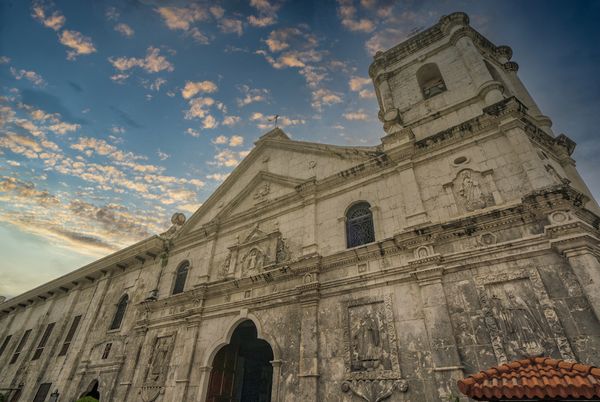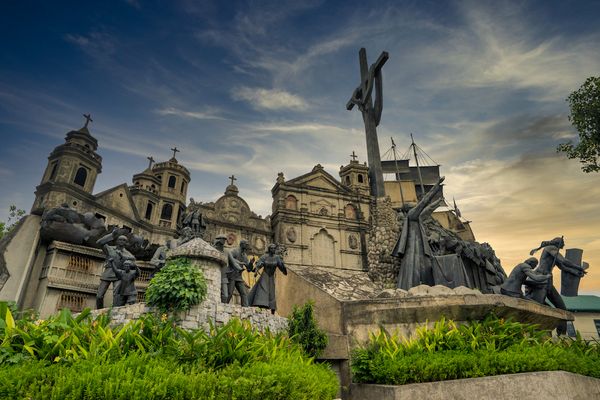The Philippines Department of Tourism celebrates the history and culture of the country by developing new circuits among its regions. It is also focusing on standardizing health and safety protocols for all tourism areas as the country gets ready to welcome the rest of the world with its famous warm hospitality.
This year, the Philippines celebrates its pivotal role in the Quincentennial commemoration of the first circumnavigation of the world by navigator and explorer Ferdinand Magellan. He arrived in 1521 and discovered a thriving civilization. Many of these ancient cultural traditions are still in practice today together with the influences that have been introduced by other cultures. This has made the Philippines an interesting destination where various cultures from different eras come together.
“We have different types of attractions and activities to suit our travelers’ interests once international borders for travel reopens. Whether it is nature trips to our beautiful beaches and mountains, or cultural immersions in our regions that have rich traditions unique to our country, there is something new to enjoy at every visit,” says Tourism Secretary Berna Romulo-Puyat.
With the country’s rich heritage and culture, sites of interest abound all over the country. Many of these historic places can even be visited conveniently in one city. Here are some places to visit on your visit to the Philippines:
Ilocos
Up North, the influences of the Spanish era abound, from the Baroque churches such as the San Agustin Church in Paoay, Ilocos Norte which is a UNESCO World Heritage Site. Built in the 17th century, it was also named as a National Cultural Treasure in 1973. The Museo Ilocos Norte gives visitors a glimpse of life in the region’s diverse cultures with displays of Ilocano, Igorot and Itneg traditional clothing, household utensils, ceremonial objects and more. The museum is housed in an old tabacalera, or cigar factory, with tobacco being one of main agricultural industries of Ilocos.
Vigan is another charming city to visit for a culture trip. The Bantay Church in Ilocos Sur is a must-see with its bell tower structure that also served as a lookout point against pirates still standing to this day. The whole street of Calle Crisologo is another UNESCO World Heritage Site in the North, with its old-world charm of cobblestone streets and heritage structures transporting tourists back in time. Vigan is also where one can watch the traditional art of pottery making at the Pagburnayan, while travelers can watch locals, in Brgy. Camangaan still in Vigan, weave the local cotton fabric called Inabel on their hand looms.

Cebu
One can find remnants from Ferdinand Magellan’s landing in the Philippines at Cebu, with a monument called Magellan’s to commemorate the first baptism held in Philippine shores, and the Sto. Nino Basilica across the street that houses the image of the Child Jesus that was gifted by Magellan to Hara Humamay and Rajah Humabon of Cebu when she was baptized into Christianity. One can also visit the Cebu Metropolitan Cathedral to view its Sino influences such as carved reliefs of phoenixes and the two dogs standing guard at the entrance.
Plaza Hamabar is named after Rajah Humabon. Here, one can find a statue of the Cebuano Chieftain as he was described by Magellan’s chronicler Antonio Pigafetta. The Cebu Heritage Monument is a tableau of concrete, bronze, brass and steel showing events and structures related to the history of Cebu. The Colon Obelisk can be found on Colon Street, which is said to be the oldest street in the Philippines and, as it is now still an important avenue for commerce. An imposing structure of stone, Fort San Pedro was built as a fortress against Muslim raiders by the first Spanish Governor General Miguel Lopez de Legazpi, and it is the oldest triangular bastion fort in the country.
For those looking to experience Cebuano arts and crafts, there are tours to the Alegre Guitar Factory and the furniture makers such as the atelier of Kenneth Cobonpue and the workshop of Dedon furniture. Other cultural stops are the Casa Gorodo Museum which is a National Historical Landmark with its glimpse into the way of life of a Chinese-Filipino family in the Parian District, 1730 Jesuit Museum or Parian Museum which is the old retreat house of the Jesuit Order in Cebu, Museo Sugbo, the former Cárcel de Cebú, which houses pre-colonial artifacts and Chinese wares, and the Carmen Copper Museum and Heritage Center which presents the history of the copper mining industry in the country.
Greater Manila Area
Corregidor Island served as a fortress of defense during the Spanish period because of its strategic location near Manila. During World War 2, it was used as a garrison against the Japanese forces by Filipino and American soldiers. Its ruins can be visited today as a memorial to those who lost their lives in the battlefield.
The Gen. Emilio Aguinaldo Shrine in Cavite was the home of the first Philippine president. It was here that the Filipino flag was formally unfurled for the first time and where the National Anthem was also played as a sign of independence from Spanish rule. In the neighboring Cavite town of Maragondon, stands the Roderico Reyes Ancestral House, better known as the Bonifacio Trial House where the leader of the Katipunan revolution Andres Bonifacio was tried and found guilty of treason by the government established by Gen. Aguinaldo.
For artful pursuits, one can go to Tagaytay and visit the Museo Orlina of modern glass sculptor Ramon Orlina and the Puzzle Mansion of enthusiast Georgina Gil-Lacuna who holds the Guinness World Record of having the most number of completed jigsaw puzzles on display. In Angono, which is known as a hometown of artists, one can find the studio home of Carlos “Botong” Francisco, the second National Artist for Visual Arts who specialized in capturing rural folk life. He was also the one who is credited for discovering the country’s oldest form of art, the Angono-Binangonan Petroglyphs that are located in a rock shelter just outside his town.
Manila
Fort Santiago in Intramuros was a Spanish fortress where the Philippine National Hero Dr. Jose Rizal was incarcerated before his execution at Bagumbayan, now Rizal Park. The fort, with its stone ramparts still intact, is now a public park with remnants of history on display in a museum celebrating Rizal’s life. The Baluarte de San Diego is another part of Intramuros that was part of its stone fortifications. Crossways and a staircase lead visitors to where cannons were strategically placed as protection against invaders.
For more historical content, tourists can visit the Casa Manila Museum which is a replica of a typical Spanish colonial mansion furnished with items of Philippine, Chinese and European origins. The National Museum, houses some of the country’s most important works of art from Juan Luna’s Spoliarium which won Exposición Nacional de Bellas Artes in 1884 in Madrid to the works of contemporary artists. The San Agustin Church in Intramuros is the oldest church in the Philippines. It exhibits remarkable features such as Baroque altars, wall buttresses and ceiling paintings in the tromp l’oeil style.
Rizal Park in Manila is a popular tourist spot for locals and international travelers for its wide open spaces and its attractions that include a dancing fountain and a bas relief map of the country. There is also a Monument to mark where Dr. Rizal was buried and a stature in honor of Rajah Lapu-Lapu, the country’s first hero, who defeated Ferdinand Magellan at the Battle of Mactan.
Western Visayas
Bacolod is known for its sugar plantations and the heritage houses nearby that illustrate how the hacienderos lived during the Spanish era. Among the houses that one can visit are Balay Negrense which was built in 1898 by Victor Gaston, son of Frenchman Yves Leopold Germain Gaston who is considered the first to popularize sugarcane cultivation on a commercial scale in the region, and The Ruins, which are what’s left of a mansion that Don Mariano Ledesma Lacson built for his wife Maria Braga Lacson after it was razed in a fire.
For a taste of heritage, stop by El Ideal, the city’s oldest bakery for a snack of their baked specialties that include bañadas, kinamunsil, masa podrida, lubid-lubid, biscocho de caña, and biscocho prinsipe.
Eastern Visayas
The region is rich with history and culture. One of the new circuits that have been developed is the Sinugdan Quincentennial Tour that brings travelers on a pilgrimage to seven heritage stone churches: Our Lady of the Immaculate Conception Church and the St. Isidore the Laborer Chapel, both in Baybay City; the Our Lady of Immaculate Concepcion Church in Hilongos, Leyte; Saint Joseph the Worker Church in Matalom, Leyte; the Our Lady of Assumption Cathedral in Maasin City; the Sto. Niño Church in Malitbog; and the St. John the Baptist Church in San Juan, all in Southern Leyte. The tour also brings tourists to other attractions in the area, such as San Pedro and San Pablo Islands in Hinunangan or Molopolo – Sta. Cruz Fish and Bird Sanctuary in Macrohon before heading to Limasawa Island where the historic first Catholic Mass in Asia was held on March 30, 1521.
Gen. Douglas MacArthur famously promised Filipinos, “I shall return”, upon retracting American troops in World War II. He returned on October 20, 1944 and his landing on the shores of Palo, Leyte has been marked with a bronze monument.
Note: The Leyte Gulf Landing headed by Gen. MacArthur was the turning point of the war in the Pacific theatre, his return/landing on October 20, 1944 together with former Presidents Sergio Osmeña and Carlos P. Romulo is now marked with a monument.
The Santo Niño Shrine and Heritage Museum which was built by the late President Marcos in his wife Imelda’s hometown in Tacloban is a repository of her priceless art collections and religious relics.
For a nature trip, visitors can head to the Sohoton Caves in Basey, Samar for a river cruise that takes them through lush vegetation before entering a cathedral-like cave with various stalactite and stalagmite formations. A stop at Basey brings tourists to a village of mat-weavers who use leaves that have been dried and dyed before being woven into intricate and colorful patterns.
Discover the Philippines’ tangible treasures
The island souvenirs of the Philippines are unlike any other in the world. Here one can find souvenirs that showcase the rich and diverse culture of the country. Rattan is one of the indigenous materials that are used for traditional packaging, from shopping bags called bayong and boxes that are used to store items in the home. Banig or woven mats are another Filipino woven product, used for sleeping or as bags and home accents.
Filipino pastimes include playing street games, such as trumpo or wooden tops that children use to battle it out to see whose top spins the longest. Music is another big part of Filipino culture, with instruments like the ukulele or the kubing or jaw harp playing important roles in traditional celebrations.
For a more modern take on the country’s culture, one can try Paradise Mango Rum that uses the sweet flavors of the Philippine mangoes in a potent drink, and the Trese komiks on which the popular Netflix show on Filipino folklore is based.
Safe journeys
As the country prepares its myriad travel attractions, the Philippines Department of Tourism is ensuring a safe visit via standardized health and hygiene protocols in its destinations.
The Tourism Department has been awarded a SafeTravels Stamp by the World Travel and Tourism Council (WTTC) in recognition of its adoption of “health and hygiene global standardized protocols” that will ensure safe travel during the COVID-19 pandemic, conducts thorough inspection and assessment, to ensure that only those who are accredited are allowed to open and receive guests.

